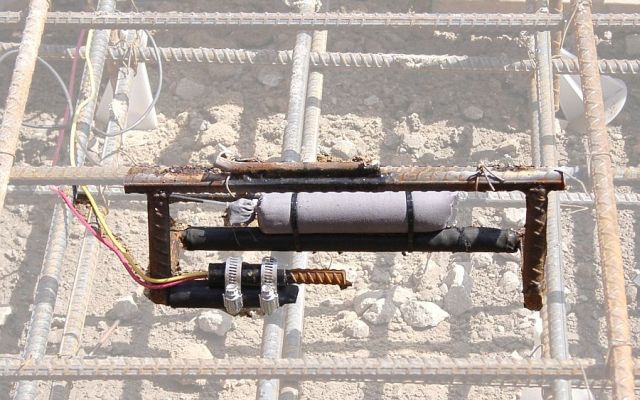Concrete Probes
Rebar probes, Model CP-REB, and steel probes, Model CP-STL, are usually installed the same distance below the surface as the rebar being monitored. They are often used in conjunction with an Ag/AgCl reference electrode such as the Model CB-AGG for linear polarization resistance measurements of corrosion rate. In this application, the rebar probe is the working electrode while the rebar net is the counter electrode. By periodically monitoring corrosion rate, the efficacy of sealers, membranes and inhibitors can be verified.
Installation of probes is made easier by using a framework such as our Model CR rebar cage shown below. The probe and reference electrode are attached to the cage in advance and the entire assembly can be tack welded to a structural rebar. In addition to simplifying installation, the use of a cage ensures that the relative placement of the probe and reference electrode is identical at every installation site.

Design Life
The design life of a reference electrode is an estimate of the time based on test results it would take for enough salt to diffuse out from the inner core to lower the salt concentration to below saturation. At EDI, we use several techniques to extend this time as much as possible. One of these techniques is to increase the amount of salt reserve contained in the gel. This is one reason why longer life electrodes have physically bigger housings. Download our paper Factors Affecting the Accuracy of Reference Electrodes to learn more.

For More Information
Complete Product Information is available for downloading as a pdf file. Click on the link below to download.
Probes for Concrete (Model CP) data sheet
The following technical papers deal with potential measurements in concrete:
Long-Term Field Tests of Reference Electrodes for Concrete – Ten Year Results
Effect of Measurement and Instrumentation Errors on Potential Readings
EDI products may be purchased from any corrosion control products distributor or directly from EDI.
